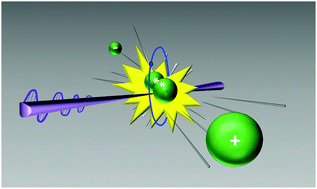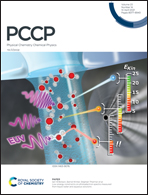Resolving the F2 bond energy discrepancy using coincidence ion pair production (cipp) spectroscopy†
Abstract
Coincidence ion pair production (cipp) spectra of F2 were recorded on the DELICIOUS III coincidence spectrometer in the one-photon excitation region of 125 975–126 210 cm−1. The F+ + F− signal shows a rotational band head structure, corresponding to F2 Rydberg states crossing over to the ion pair production surface. Spectral simulation and quantum defect analysis allowed the characterization of five new molecular Rydberg states (F2**): one Π and four Σ states. The lowest-energy Rydberg state spectrum observed (T0 = 125 999 cm−1) lacked some of the predicted rotational structure, which allowed an accurate determination of the ion pair production threshold of 15.62294 ± 0.00043 eV. Using the well-known atomic fluorine ionization energy and electron affinity, this number leads to a ground state F–F dissociation energy of 1.60129 ± 0.00044 eV. Photoelectron photoion coincidence (PEPICO) experiments were also carried out on F2 and the dissociative photoionization threshold to F+ + F was determined as 19.0242 ± 0.0006 eV. Using the atomic fluorine ionization energy, this can be converted to an F2 dissociation energy of 1.60132 ± 0.00062 eV, further confirming the cipp-derived value above. Because the two experiments were independently energy-calibrated, they can be averaged to 1.60130 ± 0.00036 eV and this value can be used to derive the fluorine atom's 0 K heat of formation as 77.251 ± 0.017 kJ mol−1. This latter is in excellent agreement with the latest Active Thermochemical Table (ATcT) value but improves its accuracy by almost a factor of three.

- This article is part of the themed collection: 2021 PCCP HOT Articles


 Please wait while we load your content...
Please wait while we load your content...
